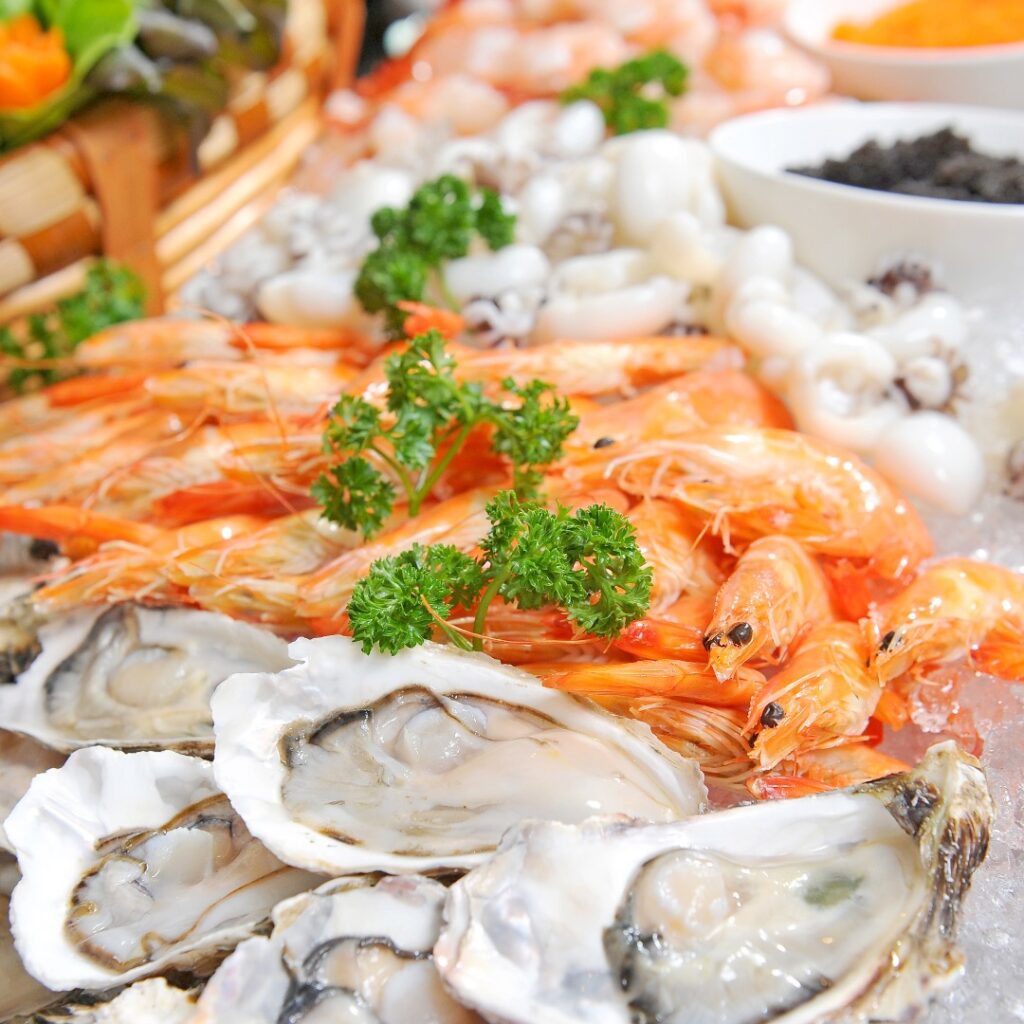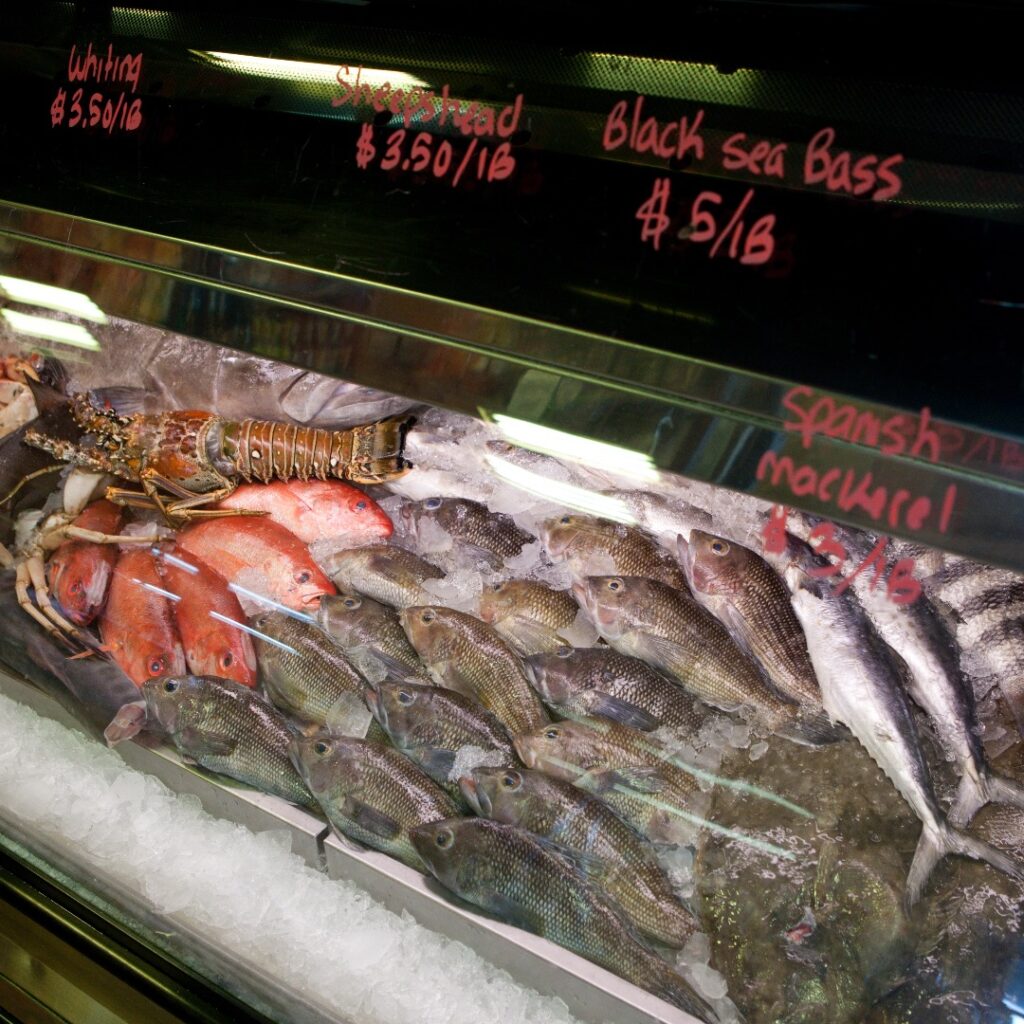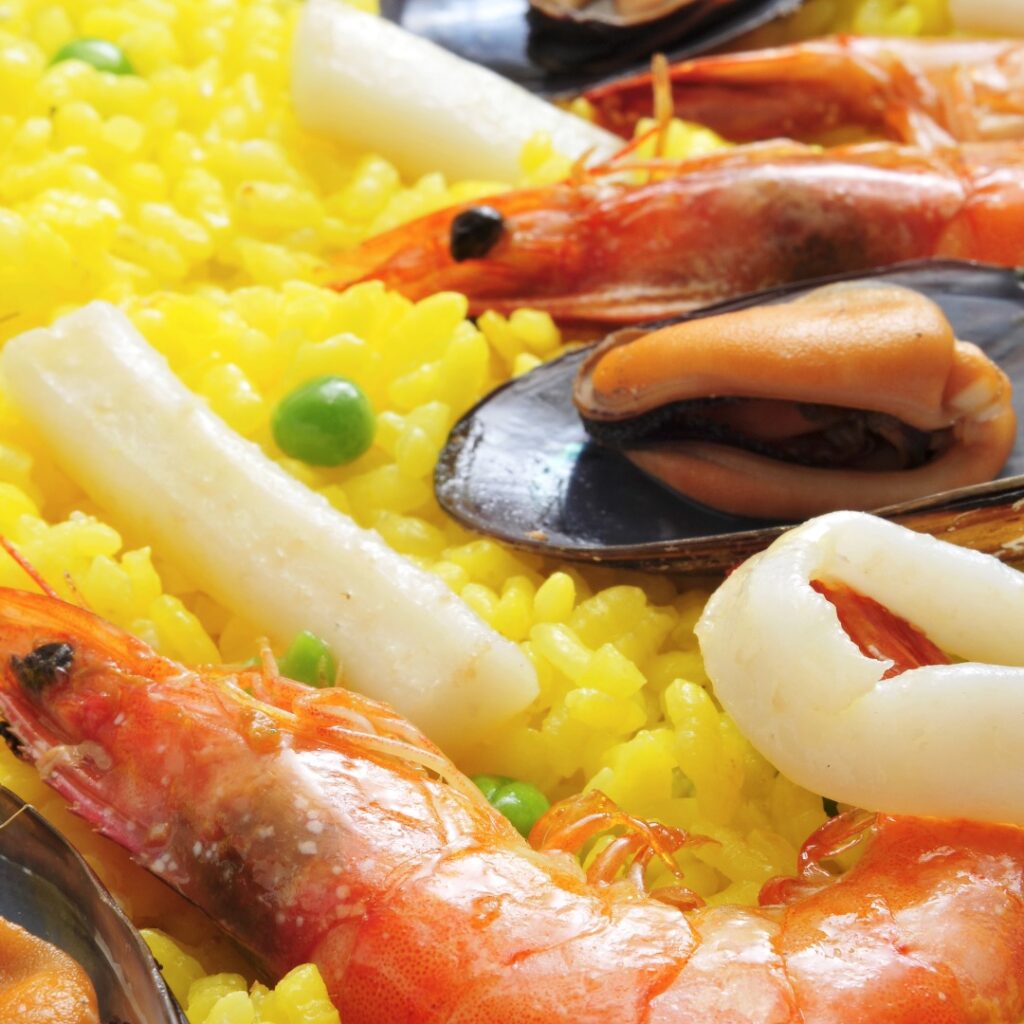 Ditch the pumpkins, caramel apples, and candy corn. Here at Florida Sea Grant, we are swinging into the fall festivities with savory stone crab legs, clams, and shrimp to celebrate National Seafood Month in October!
Ditch the pumpkins, caramel apples, and candy corn. Here at Florida Sea Grant, we are swinging into the fall festivities with savory stone crab legs, clams, and shrimp to celebrate National Seafood Month in October!
Seafood, including both finfish and shellfish, are an excellent source of digestible protein and is a package of nutrients – and it’s something that can be enjoyed year-round! If you are looking for information on seafood consumption, health, nutrition, preparation, and handling, swim no further! Florida Sea Grant’s Seafood Safety Extension Specialist and UF/IFAS assistant professor of food science and human nutrition, Dr. Razieh Farzad, is here to provide answers and resources that will help seafood lovers make smarter and healthier choices.
Q: What are the health benefits associated with eating seafood?
A: Seafood provides a great package of nutrients! Although a highly digestible protein, it has fewer calories compared to other protein-rich foods such as beef. Seafood, mainly fatty fish, is the only animal source of omega-three fatty acids with Eicosapentaenoic acid (EPA) and docosahexaenoic acid (DHA), which are proven to help with cardiovascular health, brain health, and development in children, and eye health!
Loads of other nutrients and vitamins in seafood include vitamin D and other micronutrients such as selenium. Selenium is a powerful antioxidant that may reduce cancer risk and is essential for thyroid function and the immune system.

Image provided by U.S Food and Drug Administration.
Q: How often should you eat seafood to receive proper nutritional benefits?
A: According to the United States Department of Agriculture (USDA) Dietary Guidelines, the average intake of seafood in the U.S. falls well below recommendations. The USDA suggests eating at least 8 ounces of seafood per week; that equates to 2-3 servings of seafood per week. People can use the palm of their hand as a guide for each serving size. Even though not every seafood has the same nutrients, they are all nutritious. Individuals should incorporate some form of seafood into their diet!
Q: Who should stay away from eating seafood?
A: Health professionals advise at-risk individuals, including pregnant women, children, immunocompromised people, and people with specific diseases, to refrain from eating certain seafood. At-risk populations should avoid consuming raw fish and shellfish and be aware of the risks, including food-borne illness from bacteria, also known as food poisoning.
Pregnant women and children under 12 should not eat seafood high in mercury, like swordfish and tuna. However, pregnant women can still consume low-mercury seafood, and it is actually encouraged because of omega-three fatty acids, which is critical for children’s brain development. Pregnant women can refer to resources from the Environmental Protection Agency (EPA) and Food and Drug Administration (FDA) Fish Advice document to help choose healthy and safe seafood options; this document has a chart that categorizes seafood based on the amount of mercury and what is considered high-risk or low-risk seafood for children and pregnant women. Most importantly, pregnant women should consult their health professional to decide what seafood to consume!
Environmental factors such as red tide can impact seafood consumption. During a red tide event, primary health concerns are associated with consuming molluscan shellfish such as oysters, clams, and mussels. Since commercial seafood is highly regulated in the United States, consumers should only purchase seafood commercially, or harvest from approved water bodies during red tide events.
The bottom line is every individual should talk to their health professional, be aware of their situation, and choose their seafood wisely!
 Q: Where should you get your seafood from?
Q: Where should you get your seafood from?
A: The United States is a global leader in sustainable seafood production! There are multiple checks and balances, including the FDA’s Seafood Hazard Analysis Critical Control Points (HACCP), which guarantee seafood from Farmer’s markets, grocery stores, and restaurants are safe to eat.
When selecting your seafood at a marketplace, remember that local is better! By choosing Florida’s seafood, you are supporting the traditions, lifestyles, and environment that have sustained the people of Florida for centuries. Florida is a hotspot for year-round fishing activities. It is encouraged that anglers and fishers check out our Florida Friendly Fishing Guide to implement sustainable fishing practices and learn how to properly store and handle your catch. Besides being a major fishing destination, Florida is a major aquaculture producer in the United States. Aquaculture, or “farm-raised” products, refers to the cultivation and harvesting of aquatic organisms – including finfish and shellfish- in a sustainable and regulated environment. Florida’s aquaculture industry supports the growing demand for seafood!
If you are interested in knowing where their seafood is coming from, locate the seafood counter in the grocery store and ask them for the origin of the seafood so that information is readily available to consumers as well. Refer to the National Oceanic and Atmospheric Administration (NOAA) Fisheries guide to get information and tips when choosing and buying quality seafood, both fresh and frozen. Regardless of whether farm-raised or wild-caught, fresh or frozen, always store and handle your seafood safely and properly!
Q: What are some common misconceptions about seafood, nutrition, and diet?
A:There are many misconceptions about the benefits of eating wild-caught versus farm-raised. One misconception is that people think wild-caught seafood is nutritious, but both farm-raised and wild-caught are highly nutritious!
Another misconception is about mercury. Not all seafood are high in mercury. Again, make sure to refer to the seafood chart whenever unsure about seafood with higher mercury content.
And finally, another common misconception is that fresh seafood is healthier than frozen seafood. That’s not true! Frozen seafood is just a healthy choice. Fresh harvest or catch is often immediately processed and kept frozen, keeping the nutritional integrity of the seafood before reaching consumers.
 Q: What is the best way to prepare seafood to retain its nutritional value?
Q: What is the best way to prepare seafood to retain its nutritional value?
A: Different cooking methods can affect the nutrients. If we deep fry seafood, it will absorb the oil and affect the ratio between omega three and omega six fatty acids. Sometimes, when we grill it, some seafood might also lose some of the vitamins that are water-soluble because of the dripping. Depending on the type of seafood, the cooking method might affect the nutritional value of seafood differently. For example, fattier fish absorb less oil during the frying. I suggest baking the seafood in the oven or grilling it to keep it as a healthy option on your menu. Most importantly, always follow safe food handling practices and cook the seafood to the proper internal temperature.
Q: What’s your favorite way to eat seafood?
A: My go-to recipe is salmon seasoned with saffron, salt, and pepper baked in the oven and served with basmati rice! It’s simple, easy, and nutritious!
Whether enjoying a hearty bowl of paella with scallops and shrimp, an extravagant tasting of seared mahi-mahi , or a simple baked filet of salmon, implementing seafood is an essential part of a balanced diet! You can find more savory recipes and information on seafood preparation and handling at Florida Sea Grant’s Florida Seafood at Your Fingertips video series.